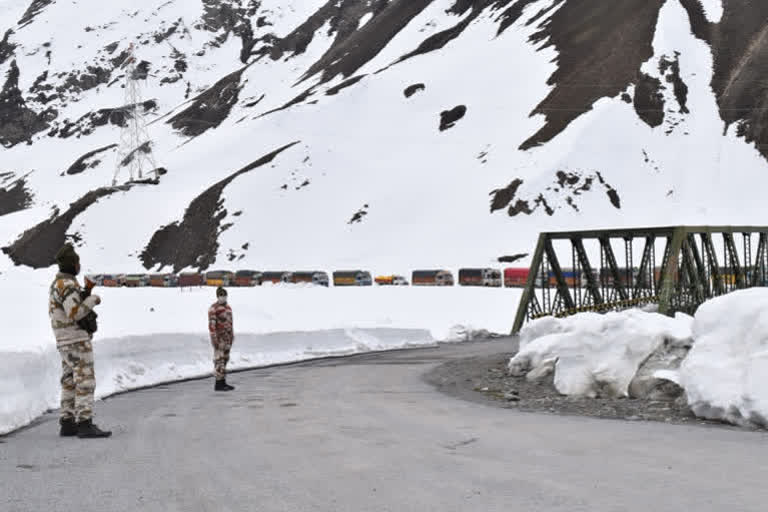Hyderabad: The fog over the June 16 incident has not yet been cleared as many questions are still hovering unanswered, making it difficult to comprehend why the Indian patrol was sent into the hostile area of LAC unarmed.
The patrolling party of the Indian army led by Colonel Santosh Babu in the dead of night on June 15-16, on a de-escalation mission, found some structures erected in the Indian territory in the Galwan valley. The Indian troops asked the Chinese to remove the structures, which led to a scuffle, which turned into a bloody face-off leaving 20 soldiers including Babu dead, and dozens injured.
To maintain peace and tranquility on about the 4,000 kilometre-long LAC, there are agreements which both the nations have signed and accepted -- be the BDCA (Border Defense Cooperation Agreement), 2013 or LAC agreement 1996. Both the countries are supposed to abide by them as per the rules of engagement as they call them in a military language.
Nowhere in those rules is it written that an army patrol on the LAC cannot carry arms, that too when there is already a hostile atmosphere. Even satellite images clearly show deployment of Chinese armoured vehicles abutting the LAC.
The agreements, however, do not allow the use of military strengths/capabilities against each other. Even following the patrol of another country is disallowed. If a territorial alignment issue is found, there are methods to address them too which the agreements mention.
Read:Galwan standoff will not be severe, says former Brigadier
When the two army patrols come in contact concerning territorial alignment - finding another patrol intruding, a display of banner shall be made to communicate to the other side to show restraint in order to respect the agreement. The banners generally are ready with the army posted at the LAC reading ‘you are inside our territory or Please Go back’.
The entire LAC is undefined with differing perceptions therefore the transgressions are inevitable. For handling the border conflicts, meeting and communication through hotlines would happen frequently until a year and a half ago. To reduce the tensions on various border points both sides have interpreters to communicate between the two armies at the local level. In fact, interpreters are carried along when a large patrol is moved to the forward patrol points. The language experts in the Indian army posted at LAC can speak Chinese and English comfortably, the same way Chinese interpreters can speak Hindi and English to communicate between the PLA and the India army.
Col Babu’s patrol could have anticipated the hostility on the night of Tuesday albeit there was an explicit message, rather a statement, through the May 5-6 face-off when the Chinese army tried to push Indian army away which was deliberate and in gross violation of BDCA.
Read:'China never follows treaties, behaves like N Korea'
As per the standard military rules, the army can use weapons in self-defense against any agreement, but army patrol during hostile environments at the LAC without arms is something which deserves a valid answer. In case of any eventuality, it is the weapon which protects a soldier who is the protector of national security.
Therefore, questions arise as to why the Indian army patrol on Tuesday moved out without weapons, and on whose instruction did they confront the Chinese army without proper gear. In the past, army patrols have been carrying weapons in full army gear. When did the army at the LAC stop carrying arms during the patrol is interesting to know. In fact, keeping the mouth of barrels down is enough of a message, rather a statement of peace.
How have the new informal border protocols, if any, been introduced on the LAC which have not only resulted in the loss of lives but have also brought out many questions for the families of the slain soldiers and for those who care for the protection of borders.
Read:Indian, Chinese armies hold Major Gen-level talks for third straight day
